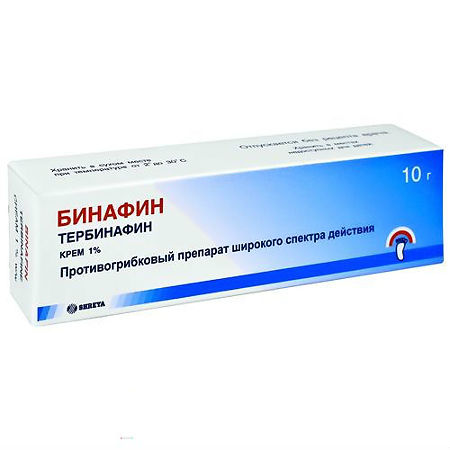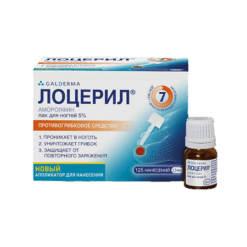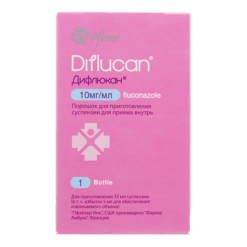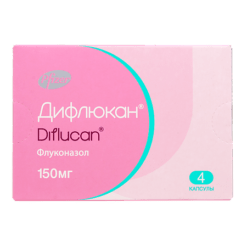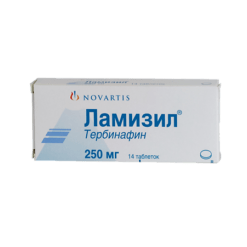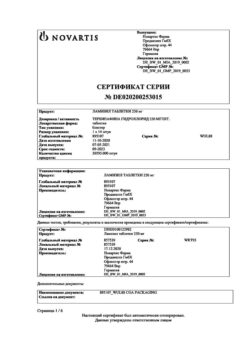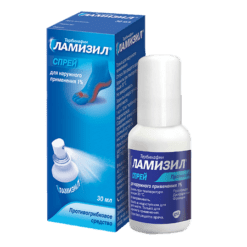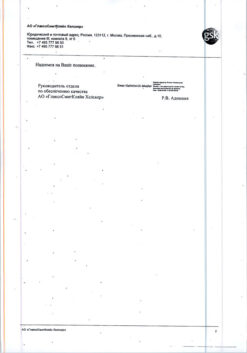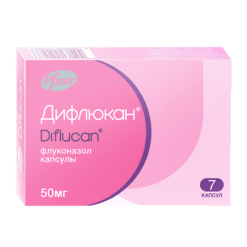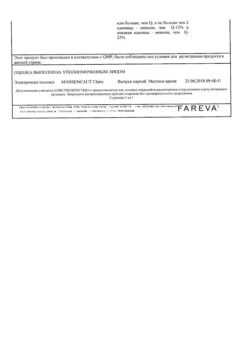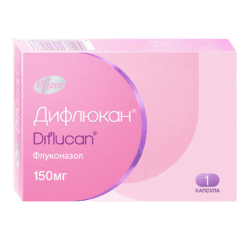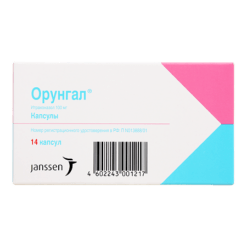No products in the cart.
Description
Binafin is a broad-spectrum antifungal.
Pharmacodynamics
Terbinafine is an allylamine, which has a broad spectrum of action against fungi that cause skin, hair and nail diseases, including dermatophytes.Dermatophytes, such as T. rubrum, T. mentagrophytes, T. tonsurans, T. verrucosum, T. violaceum, Microsporum (e.g. M. canis), Epidermophyton floccosum, and yeast-like fungi of the genus Candida (e.g. Candida albicans) and Pityrosporum. In low concentrations, terbinafine has fungicidal effect against dermatophytes, mold fungi and some dimorphic fungi. Activity against yeast-like fungi, depending on their species, may be fungicidal or fungistatic.
Terbinafine specifically inhibits the early stage of sterol biosynthesis in the fungus cell. This leads to a deficit of ergosterol and intracellular accumulation of squalene, which causes cell death of the fungus. The action of terbinafine is performed by inhibiting the enzyme squaleneepoxidase in the cell membrane of the fungus. This enzyme does not belong to the cytochrome P450 system. Terbinafine has no effect on metabolism of hormones or other drugs. When Binafin is administered orally, concentrations of the drug are created in the skin, hair and nails to provide fungicidal action.
Pharmacokinetics
After a single oral administration of terbinafine at a dose of 250 mg, Cmax of the drug in plasma is reached after 2 hours and is 0.97 µg/ml. Half-absorption period is 0.8 h; and half-distribution period is 4.6 h. There is no need to adjust the dose of the drug in case of concomitant ingestion. Terbinafine is largely bound to blood plasma proteins (99%), rapidly penetrates into the dermal layer of the skin and concentrates in the lipophilic stratum corneum. Terbinafine also penetrates into the sebaceous gland secretion, resulting in high concentrations in hair follicles, hair and sebaceous gland-rich skin. Terbinafine has also been shown to penetrate the nail plates in the first few weeks of therapy.
Terbinafine is metabolized rapidly and to a significant extent with the participation of at least seven cytochrome P450 isoenzymes, with the CYP2C9, CYP1A2,CYP3A4, CYP2C8 and CYP2C19 isoenzymes playing a major role. As a result of biotransformation of terbinafine metabolites are formed that have no antifungal activity and are excreted mainly with the urine. The final T1/2 of the drug is 17 hours. There is no evidence of cumulation of the drug in the body. There are no changes in Css of Binafin in plasma depending on age, but in patients with impaired renal or hepatic function the drug excretion rate may be delayed, which leads to higher plasma concentrations of terbinafine. In pharmacokinetic studies of a single dose of Binafin in patients with concomitant liver disease, it has been shown to reduce drug clearance by 50%.
Indications
Indications
fungal skin infections caused by dermatophytes such as Trichophyton (eg T. rubrum, T. mentagrophytes, T. verrucosum, T. violaceum, T. interdigitale, T. tonsurans, T. gipseum), Microsporum canis and Epidermophyton floccosum;
yeast infections of the skin, mainly those caused by the genus Candida (eg Candida albicans);
Versicolor versicolor (Pityriasis versicolor), caused by Pityrosporum orbiculare (also known as Malassezia furfur).
Pharmacological effect
Pharmacological effect
Binafin is a broad-spectrum antifungal.
Pharmacodynamics
Terbinafine is an allylamine that has a broad spectrum of action against fungi that cause diseases of the skin, hair and nails, incl. dermatophytes such as Trichophyton (for example T.rubrum, T.mentagrophytes, T.tonsurans, T.verrucosum, T.violaceum), Microsporum (for example M. canis), Epidermophyton floccosum, as well as yeast-like fungi of the genus Candida (for example Candida albicans) and Pityrosporum. At low concentrations, terbinafine has a fungicidal effect against dermatophytes, molds and some dimorphic fungi. Activity against yeast-like fungi, depending on their type, can be fungicidal or fungistatic.
Terbinafine specifically inhibits the early stage of sterol biosynthesis in the fungal cell. This leads to ergosterol deficiency and intracellular accumulation of squalene, which causes the death of the fungal cell. Terbinafine works by inhibiting the enzyme squalene epoxidase in the cell membrane of the fungus. This enzyme does not belong to the cytochrome P450 system. Terbinafine does not affect the metabolism of hormones or other drugs. When Binafin is administered orally, concentrations of the drug are created in the skin, hair and nails, providing a fungicidal effect.
Pharmacokinetics
After a single oral dose of terbinafine at a dose of 250 mg, the Cmax of the drug in the blood plasma is reached after 2 hours and is 0.97 mcg/ml. The half-life of absorption is 0.8 hours; and the half-life of distribution is 4.6 hours. No dose adjustment is required when taken simultaneously with food. Terbinafine is highly bound to plasma proteins (99%), quickly penetrates the dermal layer of the skin and is concentrated in the lipophilic stratum corneum. Terbinafine also penetrates the secretions of the sebaceous glands, which leads to the creation of high concentrations in the hair follicles, hair and skin rich in sebaceous glands. Terbinafine has also been shown to penetrate the nail plates within the first few weeks after initiation of therapy.
Terbinafine is metabolized quickly and substantially with the participation of at least seven isoenzymes of cytochrome P450, with the main role being played by the isoenzymes CYP2C9, CYP1A2, CYP3A4, CYP2C8 and CYP2C19. As a result of the biotransformation of terbinafine, metabolites are formed that do not have antifungal activity and are excreted primarily in the urine. The final T1/2 of the drug is 17 hours. There is no evidence of cumulation of the drug in the body. There were no changes in Binafine plasma Css depending on age, but in patients with impaired renal or hepatic function, the rate of elimination of the drug may be slowed, resulting in higher plasma concentrations of terbinafine. In pharmacokinetic studies of a single dose of Binafin in patients with concomitant liver diseases, the possibility of reducing drug clearance by 50% was shown.
Special instructions
Special instructions
Intended for outdoor use only. Avoid contact of the drug with the eyes.
Active ingredient
Active ingredient
Terbinafine
Composition
Composition
1 g of cream contains:
Active substance:
terbinafine hydrochloride 10 mg;
Excipients:
ketosteryl alcohol,
white soft paraffin,
liquid paraffin,
ketomacrogol,
methylparaben,
propylparaben,
isopropyl myristate,
sodium acid phosphate,
purified water.
Pregnancy
Pregnancy
The drug should be used during pregnancy only for very strict indications and if the expected benefit to the mother outweighs the potential risk to the fetus and child.
If it is necessary to prescribe the drug during lactation, the issue of stopping breastfeeding should be decided.
Contraindications
Contraindications
Hypersensitivity to terbinafine or any other component included in Binafin.
Side Effects
Side Effects
In rare cases, redness, itching or burning sensation was observed at the site of application of the drug, but these phenomena rarely led to the need to stop treatment. The above symptoms should be distinguished from allergic reactions (for example, urticaria), which occur rarely, but if they occur, treatment should be stopped.
Overdose
Overdose
Symptoms: headache, dizziness, nausea, pain in the epigastric region.
Treatment: gastric lavage, administration of activated carbon, symptomatic therapy.
Storage conditions
Storage conditions
In a dry place, at a temperature of 2–30 °C
Shelf life
Shelf life
3 years
Manufacturer
Manufacturer
Shreya Life Sciences Pvt. Ltd, India
Additional information
| Shelf life | 3 years |
|---|---|
| Conditions of storage | In a dry place, at 2-30 °C |
| Manufacturer | Shreya Life Sciences Pvt. Ltd, India |
| Medication form | exterior cream |
| Brand | Shreya Life Sciences Pvt. Ltd |
Related products
Buy Binafin, cream 1% 10 g with delivery to USA, UK, Europe and over 120 other countries.

